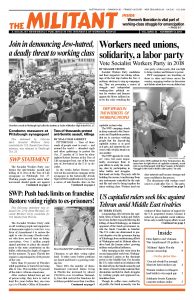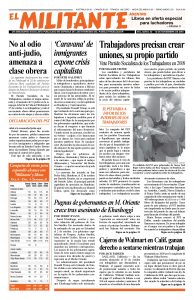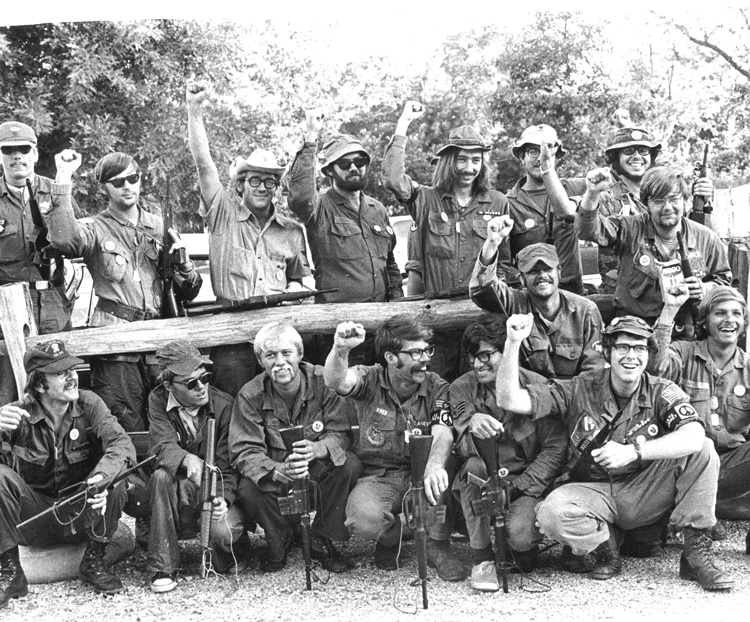Below is an excerpt from Out Now! A Participant’s Account of the Movement in the U.S. Against the Vietnam War by Fred Halstead. It is one of Pathfinder’s Books of the Month for November. The book describes how this growing movement from the early 1960s to mid-1970s refuted the U.S. rulers’ rationales for their imperialist war and mobilized opposition to it; reached out to GIs speaking out against racism and the war; deeply effected the working class; and helped force Washington to bring the troops home. The piece below is from the “Afterword.” Copyright © 1978 by Pathfinder Press. Reprinted by permission.
BY FRED HALSTEAD
The Second Indochina War was the first in the epoch of American imperialism in which the United States went down to defeat. After emerging victorious from the Spanish-American War and two world wars, then encountering a stalemate in Korea, the Pentagon’s military machine was ignominiously evicted from Vietnam, thanks to the persevering struggle of the Indochinese plus the antiwar resistance of the American people. This was the most sustained and, except for Russia in 1905 and 1917, the most effective antiwar movement within any big power while the shooting was going on.
The official propagandists cooked up various formulas to justify their military intervention. It was depicted as a crusade for democracy and freedom against the threat of communist totalitarianism and for the defense of the independence of the South against invasion from the North. The U.S. was there, it was said, to fulfill treaty obligations to the client Saigon regime and thwart the expansionism of China and the Soviet Union. Toward the end the excuses became exceedingly thin: to assure the return of the POWs; to prevent a bloodbath in the South if the NLF should take over completely; to protect U.S. troops as they were withdrawn. All this was demagogy.
In reality, U.S. intervention had a thoroughly imperialistic character. The colossus of world capitalism hurled its military might without provocation against a small and divided colonial nation thousands of miles away struggling for self-determination and unification. A series of American presidents sought to do what King George III’s empire failed to do against the rebel patriots of 1776.
On one side was a state armed to the teeth promoting the strategic aims and material interests of the corporate rich on the global arena; on the other was a worker and peasant uprising heading toward the overthrow of capitalist power and property, despite the limited political program of its leadership. …
According to the U.S. Department of Defense, the total number of American military personnel engaged at one time or another in the Southeast Asian war—including bases in Thailand and elsewhere and on ships at sea—was over eight million. This was more than half the number of Americans engaged in World War II (8,744,000 compared with 16,112,566). Over three million Americans were sent to Vietnam itself. Sixty thousand were killed, 46,000 of these in combat; and 300,000 were wounded. (The ratio of seriously wounded and permanently disabled to killed, incidentally, was much higher among Americans in Vietnam than in previous wars, owing largely to advanced techniques of removing casualties quickly to hospitals.)
The Indochinese were killed in the hundreds of thousands, possibly millions, and their lands devastated. The Pentagon dropped more bomb tonnage on the relatively small area of Indochina than had been dropped anywhere in the world in all previous wars combined.
The direct dollar cost to the U.S. in South Vietnam alone was $141 billion. This was more than $7,000 for each of the area’s 20 million inhabitants, whose per capita income was only $157 per year. The collateral expenditures amounted to far more. Economists correctly link the rapid inflation of the late 1960s to the large federal deficits resulting from U.S. spending for the Vietnam War.
Most Americans today regard this as a colossal waste of lives and wealth in a shameful war. But the Pentagon strategists make a different assessment. To be sure, they did not cover themselves with glory or succeed in crushing the Vietnamese revolution and retaining a staging area for U.S. operations in the region. But they did hold back the advancement of the colonial revolution in Vietnam for a decade and a half. That was part of their job of policing the world for American big business, its multinational companies, and its clients in Japan and elsewhere. …
[T]he antiwar agitation and mass mobilizations … changed the political face of the United States and motivated a healthy distrust of the rulers in Washington that bore fruit in the Watergate revelations and their sequels.
It broke the fever of the anticommunist hysteria and weakened the efficacy of the “red scares” that have been used as a weapon against any challenge to the status quo.
It challenged and changed the stereotyped image of GIs as obedient pawns of the brass immunized against dissenting currents within the civilian population. …
The American movement against the Vietnam War knocked a gaping hole in the theory that because of its control over the military, the police, the economy, and the tremendously effective modern media, the ruling class could get away with anything so long as there was some degree of prosperity. The antiwar movement started with nothing but leaflets. But it proved that people can think for themselves if the issue touches them deeply enough, technology notwithstanding. In human affairs there is still nothing so powerful as an idea and a movement whose time has come.


